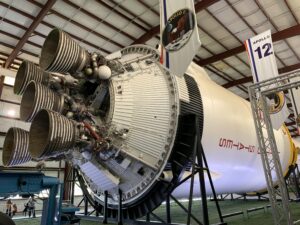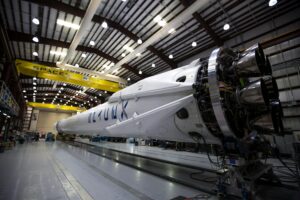Recent actions by Chinese satellites have started global talks about space technology. People are noticing unusual moves by these satellites. They wonder if these actions could harm space security and change international rules.

These new moves show how fast China’s space program is growing. Experts are looking into how these actions might change space use for both military and civilian purposes. This has led to discussions about being open and following rules in space.
Key Takeaways
- Chinese satellites are performing maneuvers never seen before in public launches.
- Space technology advancements from China challenge traditional understandings of orbital activity.
- Orbital maneuvers now draw scrutiny for potential threats to space security concerns and satellite safety.
- International communities are monitoring these developments closely for strategic implications.
- Global leaders seek clarity on how these actions align with existing space exploration agreements.
Understanding China’s Recent Space Activities
China’s space journey started in 1970 with its first satellite launch. Now, it’s a leader in space, thanks to relentless progress. The Chinese space program history shows a big change from small starts to big missions. Today, the CNSA developments get a lot of attention, thanks to a clear China’s space strategy.
Overview of China’s Space Program Development
CNSA has made big steps, like landing rovers on the moon and building a space station. Since 2020, the satellite launch calendar shows over 50 launches a year. Many are for BeiDou navigation and new tech.
Recent CNSA developments focus on reusable rockets and exploring the moon.
Timeline of Recent Satellite Launches
- 2021: Launch of Shiyan-8, a satellite testing in-orbit robotics.
- 2022: Deployment of 10 Gaofen Earth-observing satellites.
- 2023: Experimental missions like the 2023A rocket test.
These launches follow a satellite launch calendar that focuses on tech for both civilian and defense use.
Strategic Objectives Behind China’s Space Initiatives
China’s China’s space strategy aims for economic growth and national security. By 2030, it plans to have a global navigation system and return samples from Mars. The Chinese space program history shows how these goals are like the tech races of the Cold War, but with today’s innovations.
The Technical Details: What Makes These Satellites Different
China’s experimental satellites are unique because of their advanced satellite technology and space engineering innovations. They have systems that make complex maneuvers possible. Let’s look at their main features:
- Propulsion Systems: Next-gen satellite propulsion systems use electric thrusters. This allows for precise adjustments with little fuel.
- Autonomous Control: AI algorithms make decisions in real-time. This reduces the need for ground commands.
- Materials: They use lightweight, heat-resistant composites. This makes them lighter and more durable.
Understanding orbital mechanics is crucial. These satellites can change their trajectory faster than before. They use algorithms for precise speed and direction adjustments. Their satellite propulsion systems are efficient, thanks to high specific impulse engines. This extends their mission lifespans.
| Feature | Traditional Satellites | Experimental Satellites |
|---|---|---|
| Propulsion | Chemical hydrazine | Electric ion drives |
| Maneuver Speed | Hours to days | Minutes to seconds |
| Autonomy | Human-monitored | AI-assisted decisions |
These upgrades enable satellites to perform tasks like close-proximity operations. This requires exact orbital mechanics calculations. While details are classified, public data shows they use modular designs for easier repairs. These advancements show how space engineering innovations are changing space exploration and national security.
China’s Experimental Satellite Maneuvers Raise Concerns: A New Frontier in Space
Recent tracking data shows China’s satellites doing things never seen before. They are making sudden satellite orbit changes and getting very close to other satellites. This has made people wonder what they are up to.
Unprecedented Orbital Behaviors
In 2023, satellites were seen changing their paths in ways that weren’t expected. Experts say these changes could be for secret spying or messing with other satellites. These moves are unlike anything seen before, making everyone curious about their purpose.
Proximity Operations and Rendezvous Techniques
China has been testing how satellites can meet up with U.S. and commercial spacecraft without warning. A Pentagon report said:
Such unannounced approaches create risks of collision or data interference.
These systems might help clean up space junk, but they could also be used for bad things like jamming signals.
Robotic Arm Capabilities and Their Implications
China has shown off its space robotics skills with robotic arms that can grab onto satellites. These arms could fix broken satellites, but they could also disable them. The arms seem to be very good at handling things in space, which is a bit scary.
International Reactions to China’s Space Advancements
China’s space experiments have sparked global debate. It’s about finding a balance between working together and competing in space diplomacy. Governments and space agencies are adjusting their plans to keep up with new technologies.
They must innovate while protecting against space defense concerns and satellite security threats.

US Defense Department Statements
The Pentagon’s 2023 report called China’s satellite moves a “strategic challenge.” They say it’s urgent to track these activities. A
congressional hearing raised worries about “military uses hiding as civilian projects.”
The Space Force is speeding up its sensor network to watch the skies. This shows that space defense concerns are influencing US defense spending.
European Space Agency Perspective
The ESA sees risks but pushes for talks. Director Josef Karel said, “Working together on debris tracking could turn rivalry into partnership.” They’re working on sharing data, but also focusing on protecting ESA missions from satellite security threats.
Responses from Asian Space Powers
Japan’s 2024 white paper calls for regional talks. They plan to improve JAXA’s tracking systems. India’s ISRO has extended its moratorium on anti-satellite tests, showing restraint. South Korea is investing $1.2B in space surveillance.
These actions show Asian countries are finding a balance between being self-sufficient and working together in international space relations.
The Thin Line Between Civilian and Military Space Technology
Modern space innovation often blurs the line between dual-use space technology and military satellites. Satellites designed for Earth observation, communication, or environmental monitoring can also serve strategic defense roles. For instance, robotics used for satellite servicing—meant to repair aging equipment—could theoretically manipulate other spacecraft, raising concerns about space weaponization.
- On-orbit manufacturing: Builds satellite parts (civilian space applications) but could produce defensive shields.
- Advanced propulsion systems: Enable rapid satellite repositioning for emergencies or surveillance.
- Laser communication: Speeds data transfer but could blind rival sensors.
| Technology | Civilian Use | Potential Military Use |
|---|---|---|
| Robotics | Repairing satellites | Disabling adversary systems |
| High-resolution imaging | Climate monitoring | Target tracking |
| Propulsion tech | Orbital adjustments for telecom | Rapid maneuvering to evade threats |
GPS started as a military tool but became vital for global navigation apps. Today’s dual-use space technology faces similar ambiguity. Experts warn that without transparency, routine missions risk being misinterpreted as threats. The challenge lies in fostering collaboration while safeguarding security interests.
Space Debris Concerns and Orbital Safety
China’s satellite experiments are pushing the limits of technology. But they also risk making space orbits less safe. With over 27,000 tracked objects in space, the risk of collisions is growing.
Experts say that uncontrolled movements make these risks even higher. They call for urgent action to clean up space debris.
“Every satellite collision risks triggering a chain reaction that could render orbits unusable for generations.” — Dr. Alice Gorman, Space Archaeologist
Collision Risks from Experimental Maneuvers
Unpredictable satellite movements are a big challenge for keeping orbits safe. In 2023, NASA reported 48 close calls with Chinese satellites. These close calls forced satellites to make evasive maneuvers.
Without better ways to manage space traffic, these close calls could lead to more debris.
Long-term Impact on Low Earth Orbit Sustainability
Repeated satellite movements can make orbits decay faster. A single collision could create thousands of pieces of debris. This could lead to the Kessler Syndrome effect.
To keep space orbits sustainable, we need global agreements. These agreements should limit high-risk experiments in space.
International Space Station Safety Protocols
The ISS has automated alerts to avoid debris. NASA tracks orbits every hour. But, gaps in international data-sharing create blind spots.
Studies show that better protocols could reduce the risk of collisions with the ISS by 30%.
Working together is crucial: “Orbits are a shared resource,” says ESA’s debris office. Without global cooperation, the risks from our growing space footprint will only increase.
Legal Framework: Are Current Space Treaties Adequate?
The Outer Space Treaty of 1967 is key to international space governance. But, its rules are outdated for today’s satellite tech. As countries explore new space capabilities, the need for better satellite regulation and space law development is clear.
| Legal Framework | Modern Challenges |
|---|---|
| Prohibits weapons in orbit | Unarmed satellites performing military-like maneuvers |
| Requires peaceful purposes | Blurred lines between civilian and military tech |
Updating these rules is hard. The U.S. wants stricter satellite regulation for space debris. But, other countries want more access to space tech. The United Nations is trying to make changes, but it’s slow going. Dr. Elena Marquez says,
“The Outer Space Treaty was a Cold War compromise. Today’s tech demands clearer international space governance to prevent conflicts.”
- Key sticking points: jurisdiction over debris, liability for collisions, and defining “military” vs. “civilian” tech
- U.S. proposals: Real-time tracking systems and mandatory deorbit plans for defunct satellites
Without new laws, space risks will increase. We need global teamwork to keep up with tech. But, time is running out before laws can catch up.
Historical Context: Space Technology as a Geopolitical Tool

Space exploration has always been a way for countries to show their power. During the Cold War, satellites were seen as signs of strength. The U.S. Corona program started the spy satellite era, making space a secret battleground.
Lessons from the Cold War Space Race
The launch of Sputnik 1 in 1957 was more than a scientific achievement. It was a message of power. The U.S. and USSR competed to show who was better, using space technology. This rivalry has shaped today’s tech, where satellites serve both military and civilian needs.
| Aspect | Cold War Era | Modern Era |
|---|---|---|
| Key Technology | Reconnaissance satellites | AI-driven surveillance systems |
| Purpose | Intelligence gathering | Commercial, military, and diplomatic tools |
| Impact | Escalated Cold War tensions | Shapes modern diplomatic and military strategies |
Evolution of Satellite Technology in Strategic Affairs
From carrying films to today’s all-purpose satellites, technology has changed how we view strategy. Early satellites watched troop movements; now, systems like BeiDou and GPS are key for navigation, communication, and counter-space efforts. The history of satellite reconnaissance shows how these tools have grown from simple spies to vital parts of national security.
Today’s tech competition is similar to past rivalries but with higher stakes. As countries balance innovation with diplomacy, history teaches us that space reflects earthly power struggles.
Future Trajectories: Where Space Competition is Heading
Space exploration is speeding up, and new technologies are changing how we see the universe. Soon, we might see AI satellites and better ways to travel in space. Companies like SpaceX and Blue Origin are leading the way, pushing what was once thought impossible.
Predicted Technological Developments
- AI and autonomous systems: Satellites using machine learning to manage tasks without real-time human input.
- Next-gen propulsion: Nuclear thermal engines and electric thrusters could slash travel times to Mars.
- On-orbit manufacturing: 3D-printed tools and habitats built directly in space, reducing launch costs.
The Commercialization Factor
Private companies are now big players in space. NASA’s Artemis program uses SpaceX’s Starship, showing a new partnership model. This raises questions about whether profit and progress will always go hand in hand. For now, it seems they will, with startups like Relativity Space testing reusable rockets and China’s state-backed firms working with tech giants like Huawei.
“The line between profit and progress is blurring,” says a senior engineer at Blue Origin. “But competition could drive breakthroughs that benefit everyone.”
As we explore space, we might see more teamwork or new challenges. With growing budgets and dreams, the world waits to see how innovation will balance risks and rewards.
Conclusion: Navigating the New Space Frontier
China’s satellite progress is changing space. The future depends on finding a balance between new ideas and shared duties. It’s important for countries to talk openly about their space activities.
Technologies like robotic arms make things more complicated. Working together can help clear up rules and build trust. The U.S. needs to make sure its security goals match global peace.
Being responsible in space means more than just avoiding fights. It’s about making sure space is safe for everyone in the future. All countries should work together on cleaning up space and being open about their actions.
The success of the International Space Station shows that rivals can cooperate. This is a good example for the rest of us. It shows how we can achieve common goals together.
People need to understand how new technology affects them. This knowledge helps make better policies. By focusing on treaties that address today’s issues, we can use technology for good, not harm.
The space frontier is a shared resource. We must make wise decisions for the benefit of all. The future of Earth’s orbit depends on our actions.
FAQ
What are China’s recent satellite maneuvers?
China has been testing new satellite skills. They’ve shown off quick orbit changes and smart meeting techniques. This has made other countries worry about space safety.
Why are these satellite activities significant?
These actions could change how we use space. They might shift the power balance in space. It’s important for other countries to keep up with China’s space tech.
What technical features make these satellites stand out?
China’s satellites have cool tech. They use new propulsion, advanced comms, and power systems. Plus, they can move around in space in amazing ways.
Are these maneuvers posing safety risks in space?
Yes, these moves could cause space crashes. This could make space junk, which is bad for future space use.
What is the international response to these developments?
The world has mixed views. The U.S. sees strategic risks, while the European Space Agency wants to work together. Asian countries are watching and adjusting their space plans.
How do civilian and military uses of space technology overlap?
Space tech can be used for both good and military goals. For example, cleaning up space junk can also help military plans. This makes it hard to know what’s really going on.
Are current space treaties sufficient for these advancements?
Old treaties like the Outer Space Treaty of 1967 are important. But, they might not cover today’s space tech challenges. There’s a push for new rules to manage space.
What historical context is relevant for understanding space competition?
The Cold War space race is key to understanding today’s U.S.-China rivalry. It shows how space can be about pride and strategy.
What can we expect in the future for space competition?
We’ll see new tech, like AI and better propulsion. Private companies will also play a big role. This will change how countries compete in space.













